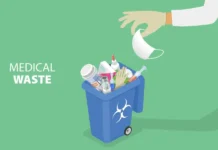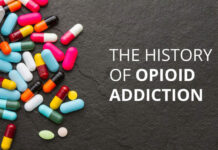It seems like the “old” hard drugs, cocaine and heroin, are slowly disappearing from the scene. This might sound like a positive thing, but when they’re still there but overshadowed by drugs like fentanyl, it’s a cause for alarm.
Fentanyl is a synthetic opioid made in labs as a prescription for severe and chronic pain. It’s typically reserved for patients in advanced cancer stages because it’s 50 – 100 times stronger than morphine. Like other opioids, the strength makes it so addicting and so easily abused.
What’s behind the rise in popularity of Fentanyl, and why is it such a deadly problem? These reasons will help you understand why the fentanyl epidemic is a massive global danger.
1. Fentanyl or Heroin? How About Both?
Heroin and fentanyl are opioids, with fentanyl easier to access for those with prescriptions.
The drug is also 50 times more potent than heroin—a scary fact when fentanyl is used by drug addicts and added to their heroin stash.
So, when you’re a drug user trying to find the ultimate high, street drugs laced with fentanyl are a perfect choice. You don’t have to choose between heroin or fentanyl; you get both.
For drug pushers, this is the ideal way to get more users. But for those who have a limited budget and a doctor willing to prescribe their medication, Fentanyl is paid for by their insurance companies. Even without insurance, the cash discount for generic opioids is cheaper than street rates.
The drug is stronger than heroin or morphine, and it costs less, making it a crowd favorite for users.
2. You Can Make Your Own
Desperate times call for desperate measures. An addict in search of a high will find ways to get it, and for some innovative people, they’ll make fentanyl in their home “labs.”
Drug traffickers import the necessary chemicals from overseas. Making the drug themselves increases the profit but also boosts the potential dangers of contamination. One kilogram of fentanyl is worth millions of dollars, so to a trafficker, it’s worth the risk.
3. You May Not Know You’re Hooked
Fentanyl overdoses are recorded through healthcare documentation from hospitals and rehab facilities. These numbers are on the rise, but they’re slightly skewed.
Yes, the people they see have fentanyl in their system. The trouble is that they don’t know they do because they thought they were taking something else.
Cocaine and meth are easily cut with other contaminants, including fentanyl. A drug user who admits to using meth but has fentanyl in their system may not be aware of it.
To make the problem worse, people who are trying to medicate with Xanax or Oxycodone are given fentanyl-laced versions instead. Getting the medication through a pharmacy eliminates the problem, but buying the drug off the street means taking your chance that you’re getting more “relief” than you intended. And that can be a deadly risk.
4. It’s All You Can Get Access To
The legal constraints on physicians are impacting people who were used to getting their opioids via a legitimate prescription. At one point, this number was over 238 million.
As soon as the realities of the addictive properties of opioids were evident, the government stepped in to regulate the industry, charging certain pharmaceutical companies with serious allegations.
Now, doctors are reprimanded and fined for writing too many painkiller scripts. If they keep doing it, they can ultimately lose their medical licenses.
It’s understandable that they’d be cautious about writing prescriptions. But someone who was already hooked on their pain meds isn’t going to stop being addicted instantly.
What’s an addict to do when they can’t get their drugs legally? They turn to illicit street drugs like fentanyl. The fix for one problem created another.
Conclusion
Drugs have been a part of society for millennia, but abuse has skyrocketed as synthetic drugs like Fentanyl hit the scene. Traffickers make a hefty profit, and users get the next big high they were looking for.
The problem is that the risk of addiction is almost guaranteed, and the only way out is rehab and recovery or death. It doesn’t seem like a calculated risk worth taking, yet opioids continue their cycle as a deadly epidemic with the addition of fentanyl.



































































